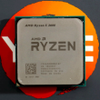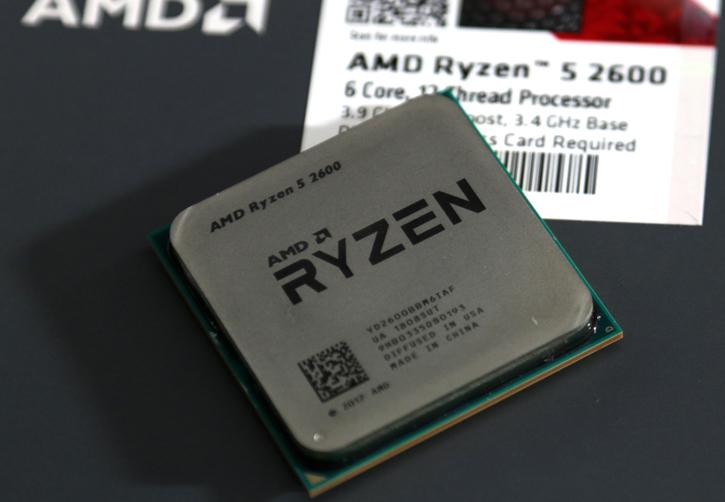Introduction
AMD Ryzen 5 2600
Without that X still eXcellent?
So what about that non-X model Ryzen 5 2600 eh? Surely you have seen some reviews on it already, but the majority of the media simply used a 2600X and downclocked it, which doesn't paint a precise picture, at all. We received the actual Ryzen 5 2600 SKU, and this 'regular' six-core proc is thirty bucks (199 USD) cheaper compared to the 2600X (229 USD) model, but really, it's the same stuff. It's just that the X is better binned and has better default clock frequencies. However, if you are willing to tweak a bit yourself, you can save 30 bucks and retrieve the very same performance. The Ryzen 5 2600 has six-cores and twelve threads and is ready 'n waiting for you at a pretty spectacular value price. A perfect piece of silicon for proper threading and gaming? Well, let's find out!
AMD has been going strong the past year, rattling all the cages with an Intel logo on it. From top to bottom they have been able to compete with Intel, introducing quad-core processors in the entry-level segment, six and eight-core for the mainstream, and up to 16-core processors with Ryzen Threadripper at the enthusiast level PCs. It has been a year already ever since AMD launched the first generation Ryzen processors. It had a bit of a rocky launch with the inter-core latency discussion a 1080p gaming performance as well as memory support. But the tide definitely turned for AMD as more and more people are considering to purchase an AMD processor-based PC, for their next purchase. The memory compatibility issues are mostly all gone, of course, we'll look at game performance in this article as well. But yes, things are looking good.
Ryzen Series 2000
AMD launches the new Zen+ update of Ryzen. Pretty much, these are the very same processors, yet tweaked a bit and now fabricated on a smaller fabrication node, AMD reached 12nm. Smaller fabrication of chips always comes with challenges, more overly, bigger benefits. There's often a little more room to play with voltages and frequencies. Last year's Ryzen processors had a frequency dead-spot threshold of roughly 3.9~4.0 GHz with some exceptions here and there. The new 12nm generation, however, can be clocked a notch higher. The upper range frequencies at 4.2~4.3 now are feasible, that also means that on the lower end of the spectrum, AMD is now capable to increase base-clock performance ion the more high-end parts. All these little tweaks bring the benefit of an overall faster processor series. Add to that improved memory latency and improved XFR2 ranges and you'll notice that the new Zen+ generation now has become a really viable and more competitive product. So the ones that have not made a move towards AMD Ryzen just yet, now potentially could or will.
Ryzen 2000 thus are 12nm Zen+ optimized Ryzen processors, the 'refresh' SKUs so to say. 12nm Zen+ processors will work fine with your X370 chipset based motherboard and vice versa, however, AMD will launch the new X470 chipset alongside these new Zen+ processors. The new chipset should offer small improvements in combo with the new 12nm products. To facilitate better XFR revision 2 options, AMD is releasing the X470 chipset, all optimized for the latest generation Ryzen procs. We'll address X470 in separate motherboards reviews though. This article will be all about the Ryzen 2000 series. This review covers the Ryzen 5 2600 (6c/12t) priced 199 USD. We’ll go into more detail on the next few pages, of course. The Ryzen 2000 series 7 and 5 processors are six and eight core processors competitively priced, combined with a nice performance increase over the last generation products. Overall we have lots to talk about and to look at, let’s start up the review on the Ryzen 5 2600, shall we?


